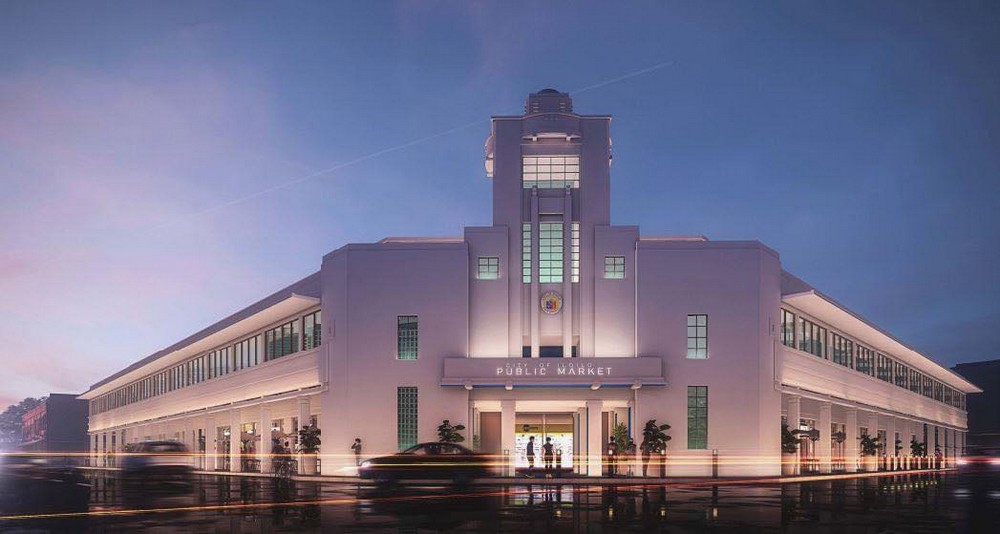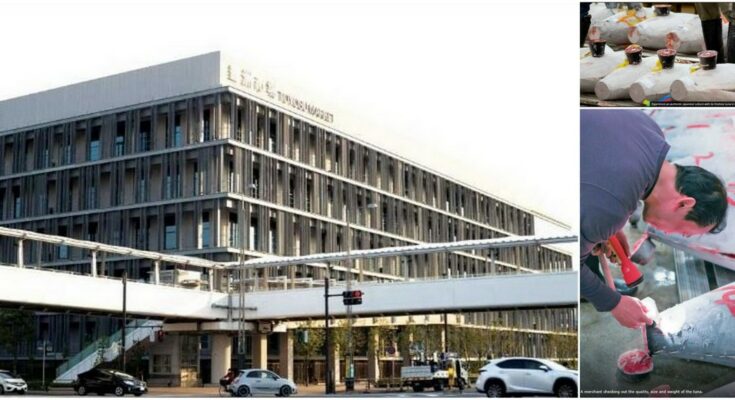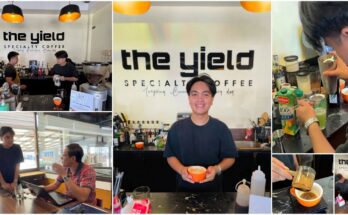DID YOU KNOW that the Tsukiji market has the biggest and most expensive tuna in the world?
Yes, a world record 333.6 million yen ($3 million) of a 612-pound (278 kilogram) bluefin tuna was sold at the Tokyo’s famed Tsukiji market by the president of sushi restaurant chain Sushi-Zanmai, Kiyoshi Kimura (the Tuna King) during the first tuna auction on January 5, 2019, following the relocation of Tsukiji market to Toyosu – a modern facility.
Early morning tuna auction was one of the fascinating aspects of Tsukiji market, witnessing a spectacle live-tuna assessment and bidding for prized bluefin tuna, which continues to draw crowds of locals and tourists alike.
Aside from the freshest seafood and an authentic Japanese culinary experience, the transformation of the Tsukiji market to Toyosu, was also a key factor in adding vibrancy to the market. Just like other public infrastructures, redevelopment happened to keep pace with the changing times and continue to serve its customers, consumers and other stakeholders, providing access to life essentials, business and cultural exchange.
Reconstruction and innovation
Japan’s legendary Tsukiji Fish Market has a long and interesting history with its predecessor that was built some time in the 1600s in Nihonbashi, the city’s old commercial center. The establishment of the Tsukiji Fish Market in 1935 was part of a larger reconstruction project following the 7.9-magnitude Great Kanto Earthquake, which devastated the city and reportedly took the lives of more than 100,000 people.
Turning the tragic disaster into an opportunity for innovation, select architects and engineers were sent to different countries to study modern architectural styles and get inspiration for designing the new market facility apt for the rapidly developing city.
The Tsukiji Market was opened as a state-of-the-art infrastructure that can withstand earthquakes and has a railway station, a wharf, as well as retail spaces for fruits and vegetables. Through the years, it grew into the world’s largest fish market and is considered as a pillar of Japanese cuisine.
Foodies and tourists from foreign shores traveled to bask in the market’s unique vibe and character. The site is popular for early morning tuna auctions, sushi-making lessons, and awesome culinary experiences.
After decades of successful operations, it was time for the market to transform again. In October 2018, the “inner market” was given a new home in Toyosu, just a stone’s throw away from the enduring Tsukiji Outer Market.
The relocation was a way to preserve the legacy of Tsukiji Market as the global leader in the seafood industry. The Toyosu location has become a hugely popular tourist destination, attracting millions of locals and tourists everyday.
Visitors continue to shop for the freshest fish, seafood and other marine products, eat their favorite sushi, sashimi, ramen and more. A driving factor for the redevelopment was the need for more sustainable features. The Toyosu building now features energy-saving LED lighting that reduced power consumption and advanced refrigeration systems that control the indoor flow, keeping the food freshness and safety; rooftop gardens or green zones of the market with solar panels and rainwater harvesting system, and sustainable transportation with its electric vehicles (known as turret trucks) and the forklifts used in transporting goods, reducing carbon dioxide emissions.
A local inspiration
Indeed, redevelopment played a vital role in the survival and progress of a city and its people. Taking inspiration from its counterpart in Tokyo, the local government of Iloilo City is raising the bar in uplifting the lives of many Ilonggos with the transformation of the city’s public markets into resilient and sustainable ones.

Ensuring the public safety, efficiency of the market, and resilience for the future, Iloilo City government and SM Prime will redevelop the Iloilo City’s markets with modern facilities and sustainability features maximizing the use of energy, water and renewable sources, with its solar power panels, water catchment system and solid waste management, providing its vendors, customers and other stakeholders an elevated overall market experience.
Once the Iloilo Central and Terminal markets are fully modernized, the public can look forward to clean comfort rooms, more parking slots and better operational spaces with greater accessibility to daily essential necessities, promoting economic, social and environmental sustainability.



